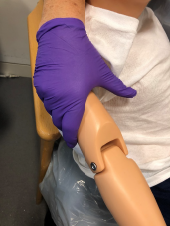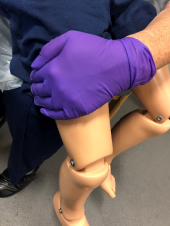Joints
Where two (or more) bones join, or articulate.
The amount of movement possible is dependent on the type of joint.
- Abduction is movement away from the midline
- Adduction is a move towards towards the midline.
- Flexion is a decrease in the joint angle
- Extension is an increase in the joint angle.
Synovial joints
Synovial - enclosed in a joint capsule and are more mobile.
e.g. knee, shoulder, hip.
The amount of movement at each joint will vary between people. This may be limited by age, level of activity or disease.
It is important that we don’t apply pressure (force) to these joints directly to stop movement.
Hinge joints
One example of a hinge joint is the elbow. The movements at hinge joints are flexion and extension.
Hinge joints are moveable joints (e.g. knee, elbow) and it is important that we don’t apply pressure (force) to these joints directly to stop movement.
Remember we can flex (bend) at the knee and elbow with quite a larger range of movement. You cannot extend (straighten) with as much range of movement.
However, people with postural distortion, cerebral palsy, physical disabilities etc. may not have the same ranges of movement.
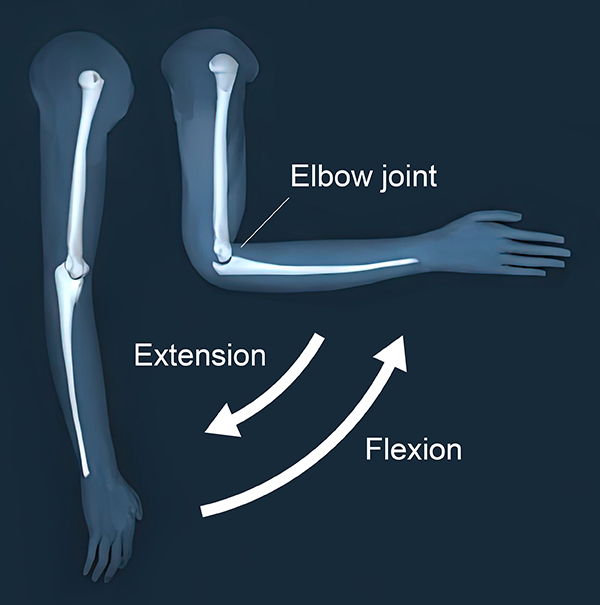
Ball and Socket Joints
One example of a ball and socket joint is the shoulder. The movements at ball and socket joints include flexion and extension, abduction and adduction, and medial and lateral rotation.
Ball and socket joints are moveable joints (e.g. shoulder and hip) and it is important that we don’t apply pressure (force) to these joints directly to stop movement. Ball and socket joints are able to move in three directions (axis), which we may want to limit during clinical holding.
However, people with postural distortion, cerebral palsy, physical disabilities etc. may not have the same ranges of movement.
Fibrous & Cartilaginous
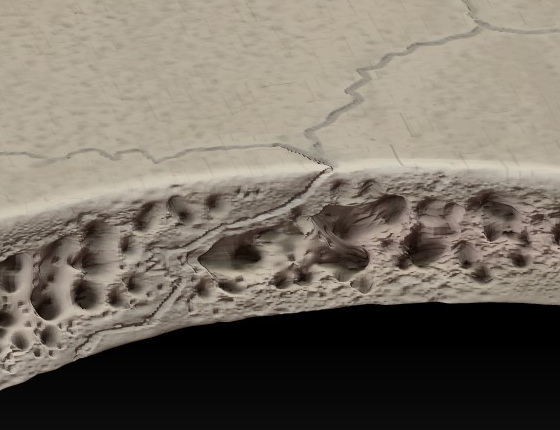
Fibrous
Joined by connective tissue with usually no movement allowed e.g. skull, teeth.
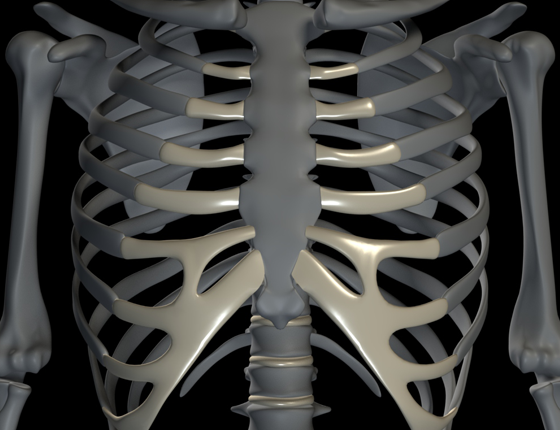
Cartilaginous
Joined by hyaline cartilage or fibrocartilage, minimal movement e.g. ribs with sternum.
Warning
Safety reasons - remember you must not apply pressure to the head or neck. Do not restrict breathing by placing pressure on the chest, for example ‘bear hugging’
In babies, the bones and joints of the skull (and other joints such as the shoulder) are not fully formed - particular care should be taken.
Immobilising joint movement within a clinical hold
Bones, muscle and tendons form levers which allow for movement in the human body.
The joint is the pivot (or axis) for the lever system and the muscles which cross the joint apply a force to move the resistance (bone).
We can see an example of this at the elbow joint.
The bicep applies a force to the radius to move the resistance.
Joints as Levers
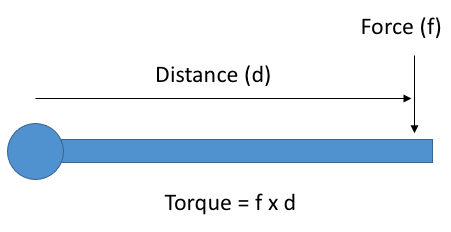
The movement of the bone around the axis is a rotational movement.
The force of this rotation (torque) can be calculated by multiplying the applied force (resistance or force) by the distance from the axis.
This is important for clinical holding. If we increase the distance between our hold and the joint, we can reduce the amount of force required.
For example, if we want to prevent a child from bending their arm we could hold their arm close to the elbow.
Or we could hold their arm at the wrist. By increasing the distance from the joint (pivot) we can use less force to achieve the same torque.
Activity
Hold your hand out palm down and apply pressure (force) at the upper arm, lower arm and top of the hand. Which position requires the least force to stop movement.
Considering these principles with procedures which may require clinical holds such as taking blood
Key learning
- Movement occurs around joints
- When immobilising a limb it is important to use the least amount of force/pressure (strength). This can only be achieved by maximising the distance between the joint and the area where you are applying pressure
- There are very few instances where a grip is needed to immobilise the patients’ movement. By applying pressure in the correct area and in the correct direction the amount of strength required from the nurse/parent or guardian is reduced
- Under no circumstances must any pressure be applied to a joint
- Remember to allow some movement in the child’s limbs which do not need to be immobilised and their torso (chest) should never be constricted
Now that you have thought about how the body moves, think about the principles in relation to clinical holding. To do this now look at the Clinical holds Tool and then the Framework for Clinical Holding
Developed by Dr Chris Hartley, Dr Andrea Page & Alison Warren

